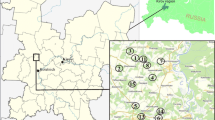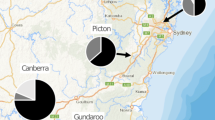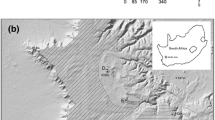Abstract.
We performed a molecular survey of colonies of the termite Reticulitermes flavipes in order to identify colonies which had undergone mergers with one or more colonies of conspecifics, and to provide a detailed description of the breeding system within such fused colonies. By combining the results of previously published studies on R. flavipes with unpublished work undertaken for other studies, we compiled a database of 354 colonies from which we identified eight (2.3%) colonies which appeared to have undergone fusion. In the majority of these colonies (six of eight, 75%)we could assign nearly all individuals to one of two (or more) unrelated families (r between families= 0.016, SE=0.048, P=0.37), while no individuals had genotypes consistent with interbreeding between cohabiting families. Such intermediate genotypes were also lacking from two colonies sampled during multiple years of the survey, and analysis of immatureindividuals from these latter colonies further indicated that only one of the cohabiting families had actively reproducing kings or queens. The lack of relatedness between families based on microsatellite markers implies that kin selection does not play a role in the formation of these merged colonies, while the short-lived nature of any increase in genetic diversity suggests that its role is also likely to beminimal. We cannot rule out the hypothesis that some other selective force governs the formation of these mixed-family colonies within the populations that we studied, nor can we exclude the possibility that selection plays a more prominent role in this trait within different populations of R. flavipes. Interestingly, we found that merged families had identical or near identical mtDNA haplotypes suggesting a maternally inherited basis to nestmate recognition and colony fusion. Given the lack of detailed information on the recognition system in this termite, we suggest that this phenomenon should serve to encourage further studies on the mechanisms of recognition within this model termite system.
Similar content being viewed by others

Author information
Authors and Affiliations
Corresponding author
Additional information
Received 4 October 2007; revised 29 January 2008; accepted 22 February 2008.
Rights and permissions
About this article
Cite this article
DeHeer, C.J., Vargo, E.L. Strong mitochondrial DNA similarity but low relatedness at microsatellite loci among families within fused colonies of the termite Reticulitermes flavipes . Insect. Soc. 55, 190–199 (2008). https://doi.org/10.1007/s00040-008-0999-0
Published:
Issue Date:
DOI: https://doi.org/10.1007/s00040-008-0999-0



